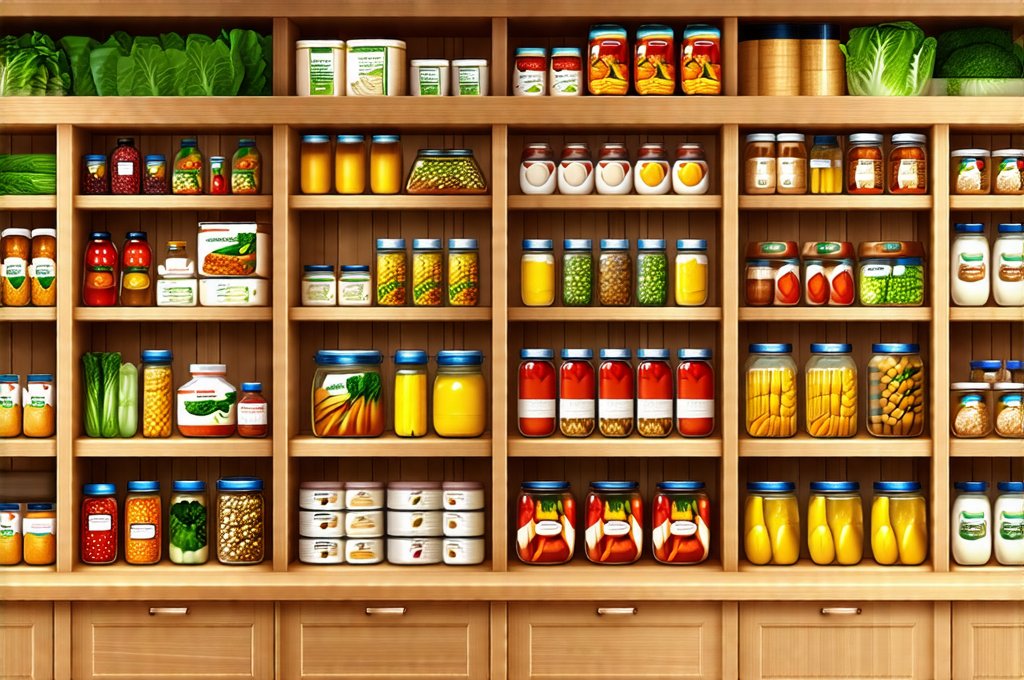Gastroesophageal reflux disease (GERD) impacts millions worldwide, often leading to frustrating symptoms like heartburn, regurgitation, and even more serious complications over time. While medication plays a crucial role in managing the condition, dietary changes are equally important—and often underestimated—in providing lasting relief. Many people with GERD find that certain foods trigger their symptoms, making it essential to understand how to create a pantry stocked with options that support digestive health rather than exacerbate reflux. This isn’t about restrictive dieting; it’s about informed food choices and building sustainable habits that empower you to take control of your well-being.
The good news is building a GERD-safe pantry doesn’t mean eliminating all enjoyable foods. It means learning which foods are more likely to trigger symptoms, understanding why they do so, and proactively replacing them with gentler alternatives. A thoughtful approach to pantry stocking can significantly reduce the frequency and severity of reflux episodes, leading to improved quality of life and potentially reducing reliance on medication. This article will guide you through building a long-term GERD management strategy centered around a carefully curated pantry – one designed for comfort, nourishment, and lasting relief.
Understanding Trigger Foods & Pantry Staples
The foundation of a GERD-safe pantry lies in understanding what typically triggers symptoms. High-fat foods are notorious culprits, as they delay stomach emptying and increase acid production. Similarly, acidic foods like citrus fruits and tomatoes can directly irritate the esophageal lining. Caffeine, chocolate, mint, and carbonated beverages also tend to relax the lower esophageal sphincter (LES), allowing stomach acid to flow back up. However, everyone is different – what triggers one person may not affect another. Keeping a food diary to identify your personal trigger foods is an invaluable first step.
Beyond avoiding triggers, focus on incorporating pantry staples that support digestive health and minimize reflux risk. This includes low-fat proteins (like chicken breast or fish), complex carbohydrates (whole grains like oatmeal and brown rice), and non-citrus fruits and vegetables. Fiber-rich foods are particularly beneficial as they help absorb stomach acid and promote regular bowel movements, reducing pressure on the LES. Alkaline foods, such as bananas and melons, can also help neutralize stomach acid. Ultimately, a GERD-safe pantry is built around balance – minimizing irritants while maximizing nutrient density and digestive support. You might also find it helpful to explore building a gut-friendly meal plan to further optimize your diet for digestive health.
Consider these core staples to begin: oatmeal, brown rice, quinoa, lean protein sources (chicken breast, turkey, fish), bananas, melon, sweet potatoes, whole-wheat bread, almond milk, herbal teas (ginger, chamomile), and olive oil. These provide a solid base for creating nutritious and symptom-friendly meals. Thinking long-term, you can also explore building a family-friendly meal plan that caters to all ages.
Building Your GERD-Safe Pantry: Practical Steps & Swaps
The transition to a GERD-safe pantry isn’t an overnight process—it’s about making gradual, sustainable changes. Start by assessing your current pantry and identifying foods that are known triggers or contribute to unhealthy habits. Then, systematically replace them with healthier alternatives. For example, swap out regular coffee for herbal tea, rich cream sauces for olive oil-based dressings, and sugary cereals for oatmeal.
- Read Labels Carefully: Pay attention to fat content, acidity levels, and ingredients that might trigger your symptoms (e.g., caffeine, mint).
- Prioritize Whole Foods: Minimize processed foods as they often contain hidden triggers like high fructose corn syrup or artificial additives.
- Stock Up on Soothing Options: Keep a supply of alkaline-rich fruits and vegetables readily available for snacks and meals.
- Portion Control: Even GERD-friendly foods can cause issues if consumed in large quantities. Practice mindful eating and portion control to avoid overfilling the stomach.
Don’t be afraid to experiment with different substitutions until you find what works best for you. Remember, this is a personalized journey, and there’s no one-size-fits-all solution. The goal is to create a pantry that supports your digestive health and allows you to enjoy food without fear of triggering GERD symptoms. For those experiencing discomfort, consider building a gentle meal plan for symptom relief.
Identifying & Avoiding Common Triggers
Many seemingly harmless foods can exacerbate GERD symptoms. Fatty foods are among the biggest culprits, as they slow down digestion and increase acid production. This includes fried foods, full-fat dairy products, fatty cuts of meat, and even some nuts. Similarly, acidic foods like citrus fruits (oranges, lemons, grapefruit), tomatoes and tomato-based products (sauce, ketchup), and vinegar can directly irritate the esophageal lining.
Beyond these common triggers, certain beverages are also known to worsen GERD symptoms. Caffeine, found in coffee, tea, and soda, relaxes the LES, increasing the risk of acid reflux. Carbonated drinks introduce gas into the stomach, increasing pressure and potentially forcing acid upward. Mint (peppermint, spearmint) can also have a similar effect on the LES. Finally, chocolate, due to its high fat content and caffeine, is often a problematic food for individuals with GERD. Learning your specific triggers through careful observation and a food diary is essential for effective management. Understanding how to create a safe meal plan can also be incredibly beneficial.
The Role of Fiber & Hydration
Fiber plays a critical role in managing GERD symptoms by absorbing excess stomach acid and promoting regular bowel movements. This reduces pressure on the lower esophageal sphincter (LES) and minimizes the risk of reflux. Incorporating fiber-rich foods into your diet can significantly improve digestive health and alleviate discomfort. Excellent sources include whole grains (oatmeal, brown rice, quinoa), legumes (beans, lentils), fruits (bananas, apples with skin), and vegetables (broccoli, carrots).
Adequate hydration is equally important for GERD management. Water helps dilute stomach acid and facilitates digestion, reducing the likelihood of reflux episodes. Aim to drink at least 8 glasses of water per day, and avoid sugary drinks or excessive caffeine, which can worsen symptoms. Staying hydrated also supports healthy bowel function, further minimizing pressure on the LES. Consider herbal teas, such as ginger or chamomile, for soothing relief. A well-stocked pantry will help with this; consider creating a safe pantry to ensure you have all the essentials.
Meal Timing & Portion Control Strategies
How you eat is just as important as what you eat when managing GERD. Eating large meals can overwhelm the stomach and increase the risk of acid reflux. Instead, focus on smaller, more frequent meals throughout the day. This reduces pressure on the LES and allows your body to digest food more efficiently. Avoid eating within 2-3 hours of bedtime, as lying down immediately after a meal increases the likelihood of regurgitation.
- Slow Down: Eat slowly and chew your food thoroughly to aid digestion and prevent overeating.
- Portion Control: Use smaller plates and bowls to help manage portion sizes.
- Elevate Your Head: If you experience nighttime reflux, elevate the head of your bed by 6-8 inches using blocks or a wedge pillow.
- Avoid Tight Clothing: Tight clothing around the abdomen can increase pressure on the stomach, exacerbating GERD symptoms.
These simple adjustments to meal timing and portion control can significantly reduce the frequency and severity of reflux episodes, promoting greater comfort and well-being. Remember consistency is key – establishing these habits as part of your routine will yield long-term benefits. You might also find it helpful to follow guidelines for building a one-pot meal that’s gentle on the digestive tract.


















